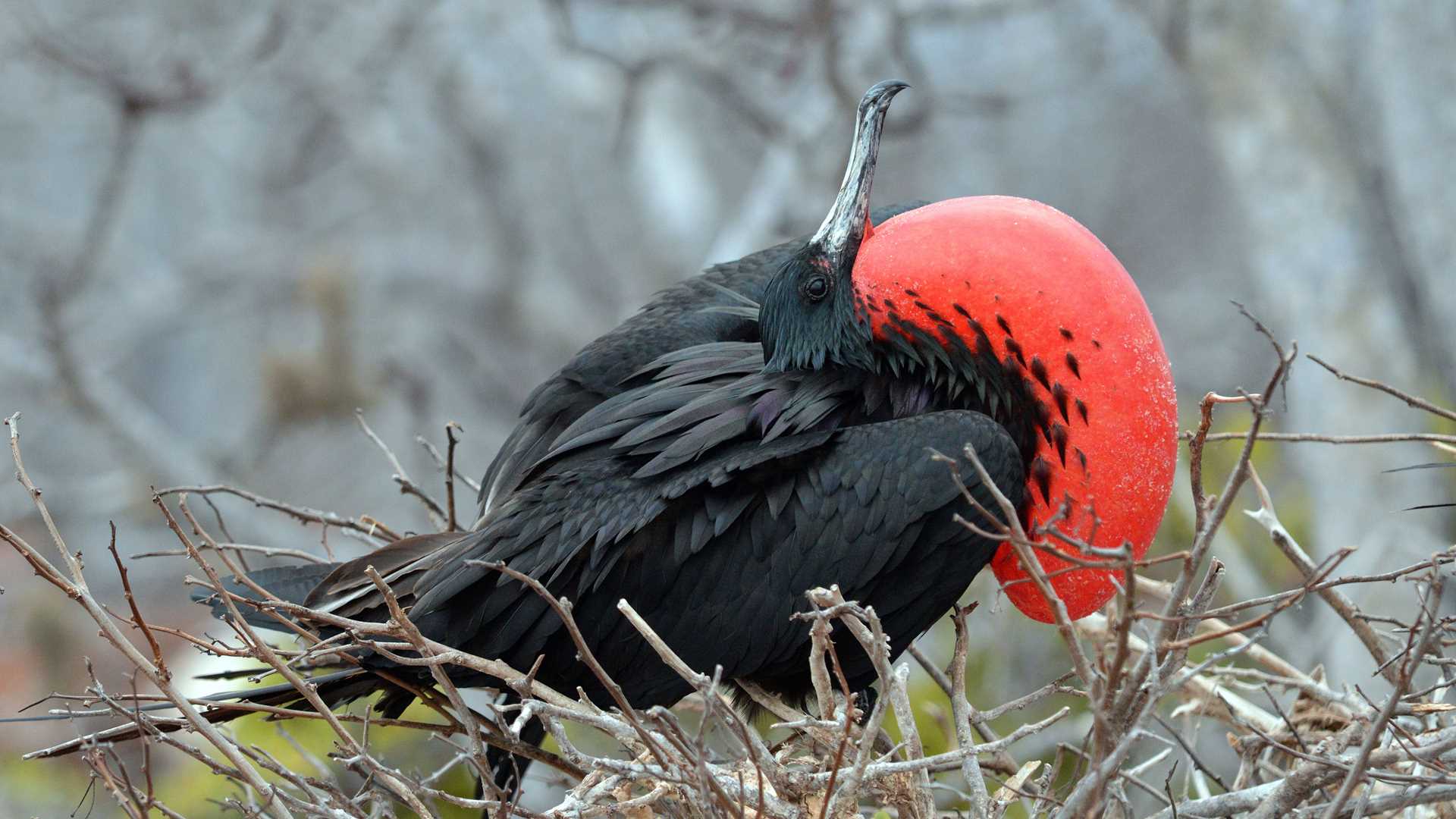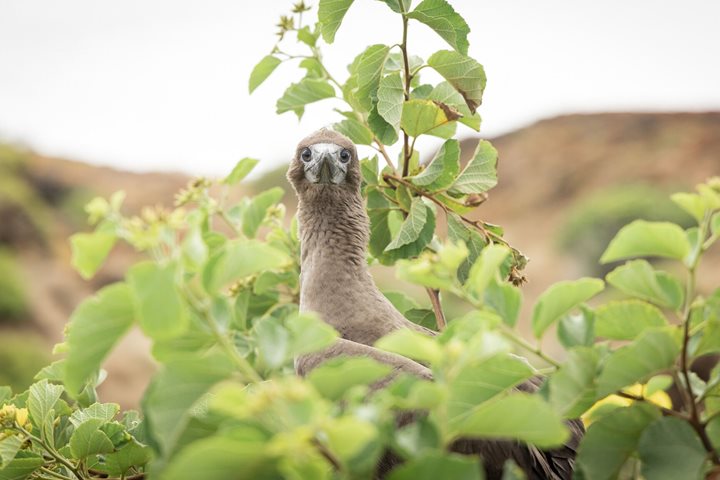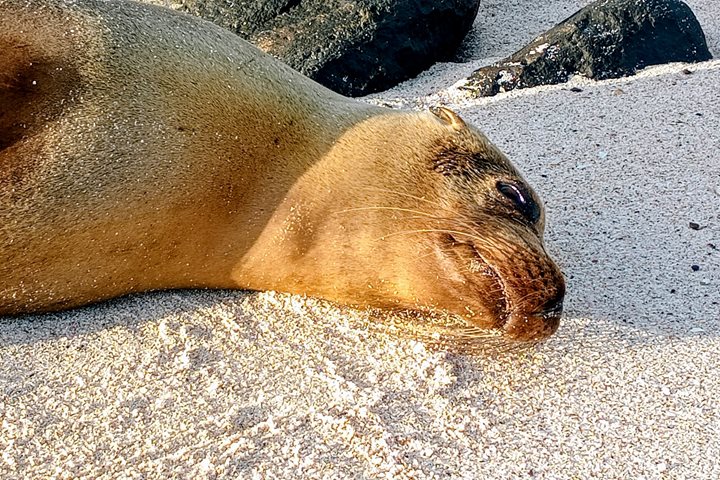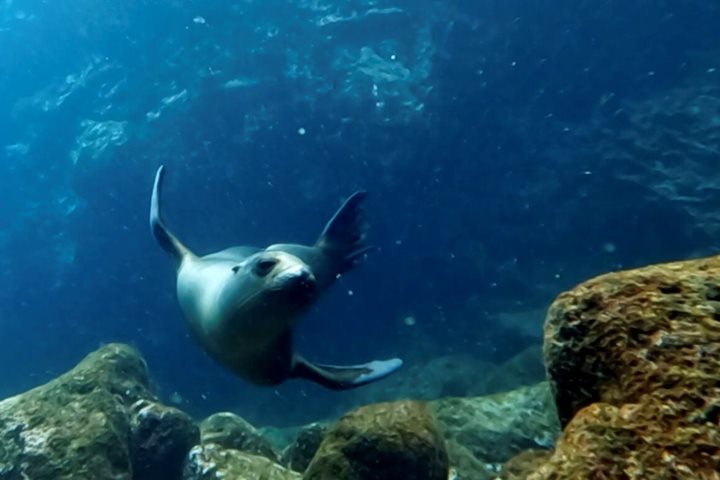North Seymour and Rabida are two of the smallest islands located in the central part of the Galapagos archipelago. The fact that they are small does not mean that these islands are not amazing; their beauty and charm make them unique and spectacular.
After a short navigation in the early morning, National Geographic Islander II arrived at North Seymour. The morning was sunny and a little windy, normal for this time of year, but the behavior of the sea was different. On the northern part of the island, huge waves crashed against the rocky shore. After breakfast, we boarded Zodiacs and headed to the landing site. Some seabirds caught our attention immediately. Dozens of swallow-tailed gulls landed on the island after a long fishing trip. These gulls are the only nocturnal seagull in the world.
We observed royal and magnificent frigates nesting on bushes in the forest of rosewood trees inside the island. We spotted some juveniles and chicks; they patiently waited for the return of their parents, who would bring them a meal.
Along the rocky path, our guests were delighted to observe marine iguanas, blue-footed boobies, and even sea lions. The gigantic sea lions produced a thunderous noise as they burst out from the rocks along the shore. Midmorning, we returned to the ship and immediately began to navigate in a northwesterly direction towards Rabida Island.
After lunch, we arrived at Rabida. The sea was much calmer than in North Seymour. In the distance, the reddish color of the volcanic landscape captured the attention of our guests. The unexpected coloring is a result of the oxidation of the iron contained within the lava. Midafternoon, we landed on the beach to start snorkeling activities along a cliff that protects the bay. We observed various colorful fish, whitetip reef sharks, and stingrays. We even had the opportunity to swim with playful sea lions.
After snorkeling, we returned to the ship to prepare for kayaking or a walk along the beach. I was in charge of the kayakers, and we headed to the west side of the island. This outing was really spectacular. We spotted four Galapagos hawks, two adults and two juveniles, flying nearby. They were probably in search of marine iguanas or any other land reptile for food. In the sea, sea lions swam around the kayaks. It was a pleasant surprise to observe a sea lion pull a tuna out of the sea. We watched in amazement as it shredded the fish into pieces on the shore, hitting it against the rocks before swallowing it completely. While we were rowing, we observed the seabed clearly; we could see many colorful fish. In a feeding frenzy, pelicans and blue-footed boobies were busy diving very close to us. We watched the sunset in the west, and it was time to return to the ship. Our guests were tired but happy. Today was a unique and spectacular day in this beautiful place called Galapagos.







